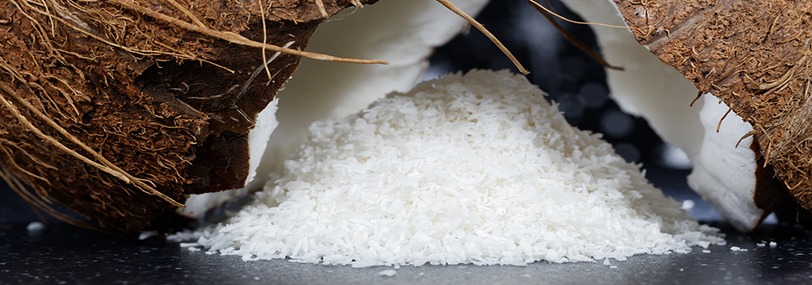
6 Reasons Why Desiccant Is Definitely Best
March 20, 2017
I need to put my hands up and confess, before I started working at dehum, I had never heard of a desiccant dehumidifier. Images of flaked coconut came to mind every time the word ‘desiccant’ was mentioned. Desiccant, desiccated, what’s the difference?
Compressor driven units have been the established way of doing things, using a cooling method to extract excess moisture by condensing on a cold surface. This reduces the absolute humidity but increases the relative humidity (RH). A reheat coil then reduces the RH again. So fairly complicated!
A desiccant dehumidifier has no compressor and does not use a cold surface to extract excess moisture from the air. Instead it has a desiccant wheel that absorbs the moisture directly from the air, in a similar way to a sponge. The desiccant is regenerated by an internal heater so that the process can be repeated time and time again.
dehum has chosen the desiccant route. This triggered me to dig a bit deeper and find out why. Please trust me and read on, I will try and make this interesting and useful…
- CHEAPER TO RUN
If you compare like for like, you may think that a desiccant unit has a higher hourly power consumption than a compressor driven unit. However, this is misleading as the desiccant unit will be running for a much shorter period of time, to achieve the same net result. So in essence, it is cheaper to run.
2. NO NASTIES
Compressor driven units contain refrigerants (HCFC’s) and although these have a reduced ozone depletion effect, these gases still contribute to global warming. Desiccant units do not contain such refrigerants so are totally eco-friendly.
3. NOT TEMPERATURE SHY
Desiccant dehumidifiers are unaffected by temperature and can work down to very low temperatures. Compressor driven units struggle to work in temperatures below 10°C, as the refrigerant gas will be close to freezing and the result is a block of ice. The colder it is, the harder the compressor has to work and the less effective it will be at moisture extraction. If any freezing does occur, this triggers off the inbuilt defrost cycles, releasing all the water that has been collected back into the atmosphere.
4. LONGER LASTING
A desiccant dehumidifier tends to outlive a compressor unit as it contains fewer moving parts and is altogether a much simpler process, meaning far less can go wrong. The desiccant material does not expire and will not need to be replaced or topped up.
5 NICE ‘N’ QUIET
Desiccant dehumidifiers tend to be sleeker, smaller and quieter to operate. In fact, the dehum range of desiccant dehumidifiers are sleek, ultra-modern, virtually silent, easy to clean and have very low consumption/operating costs.
6. RELATIVELY BETTER
A desiccant dehumidifier can easily perform at less than RH 40%, which is below the rusting point of metal. In some applications, including lithium battery and pharmaceutical manufacturing, our industrial desiccant dehumidifiers can reach a relative humidity of less than 1%!
Many industrial applications require the RH% to be maintained at 40% or lower. This is where a compressor unit will not be performing efficiently or at all. Desiccants really do come into their own in these circumstances.
If you would like to find out more about our desiccant dehumidifiers or would like our friendly team to visit your site for a free survey, please visit our website www.dehum.com or call 01926 882624.









